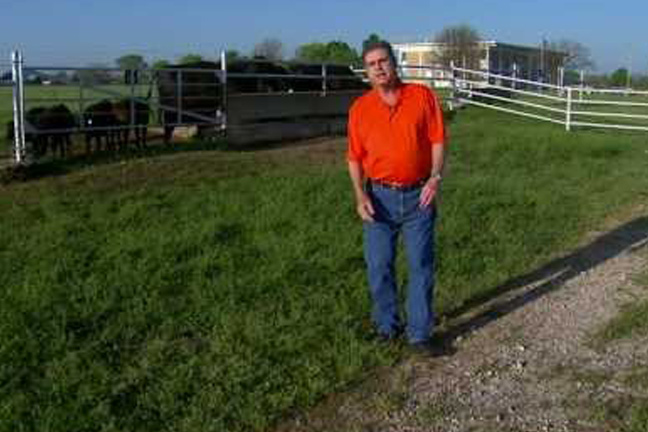
Agricultural News
Understanding the Impact of Wet Hay Important, Selk Says
Mon, 04 Jun 2012 12:06:23 CDT

May might have been a drier month than normal, but June rains are making up for lost time in many parts of the state. Writing in this week's Cow-Calf Newsletter, Oklahoma State University Extension Animal Scientist Emeritus Glenn Selk says getting in a hay crop in wet conditions requires some finesse:
Each night that follows a rainy day in Oklahoma is filled with many bedtime prayers of thanks from farmers and ranchers who have too often experienced drought and short hay supplies. Nonetheless, the timing of the rains may represent a challenge to cattlemen that are trying hard to put quality hay in the bale for next winter's feed supply. All producers that harvest hay occasionally will put up hay that "gets wet" from time to time. Therefore, ranchers and hay farmers need to understand the impact of "wet hay" in the tightly wound bales. Dr. Bruce Anderson of the University of Nebraska-Lincoln writes of several cautions that producers should keep in mind as we store some poorly cured hay.
Extra moisture in hay can cause heat inside the hay bale or hay stack. Testing wet hay may be very important. Hay thermometers (20 inch probes) may be purchased from agriculture supply companies for about $15.00 - $25.00. This could be a worthwhile investment, if it allows the producer to prevent a fire. Heat produced by the bale comes from two sources: First) biochemical reactions from plants themselves as hay cures. (This heating is minor and rarely causes the hay temperature to exceed 110 degrees F. Very little if any damage occurs if the hay never exceeds 110 F.); Second) Most heat in hay is caused by the metabolic activity of microorganisms. They exist in all hay and thrive when extra moisture is abundant. When the activity of these microbes increases, hay temperature rises. Hay with a little extra moisture may not exceed 120 degrees F., whereas, wetter hay can quickly exceed 150 degrees. If the hay rises above 170 degrees, chemical reactions can begin to occur that produce enough heat to quickly raise the temperature above 400 degrees and the wet hay can begin to burn and cause fires. Be wary of the fire danger of wet hay and store it away from buildings and other "good" hay just in case this would occur.
Heat-damaged hay often turns a brownish color and has a caramel odor. Cattle often readily eat this hay, but because of the heat damage, its nutritional value might be quite low. Dr. Ray Huhnke, Oklahoma State University Extension Agricultural Engineer tells of producers that reported that "the cows ate the hay like there was no tomorrow, but they did very poorly on the hay". Heat damage causes hay to be less digestible, especially the protein.
Testing the protein and energy content of stored wet hay will allow for more appropriate supplementation next winter when that hay is fed. Moldy hay could be a source of mycotoxins that could present several health problems for cattle. Many animal disease diagnostic laboratories can examine feedstuffs for mycotoxins or can recommend laboratories that do such testing.
WebReadyTM Powered by WireReady® NSI
Top Agricultural News
More Headlines...



















